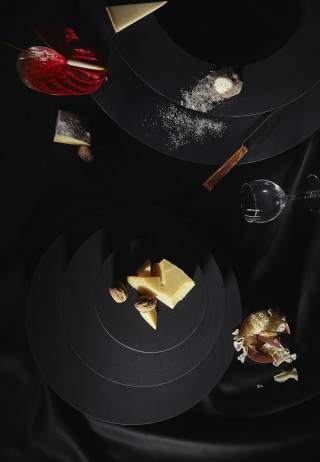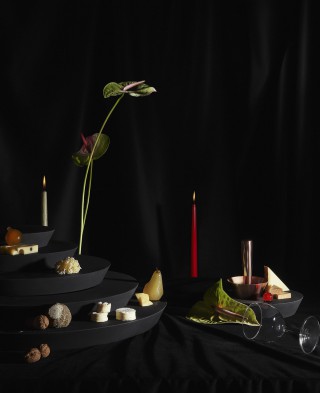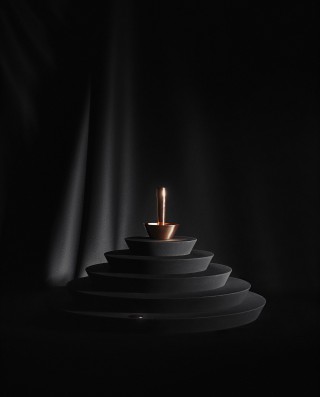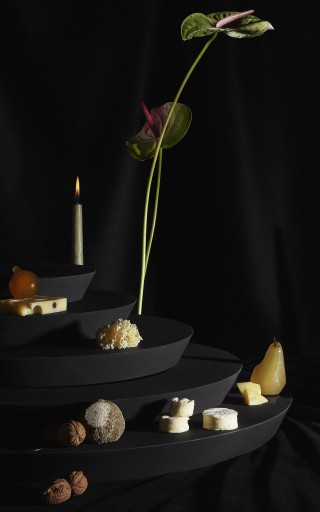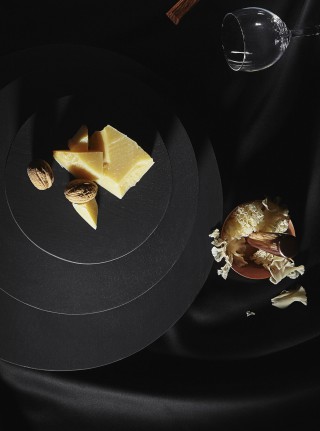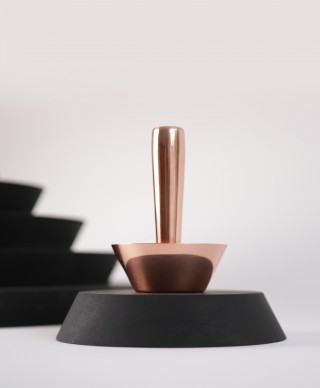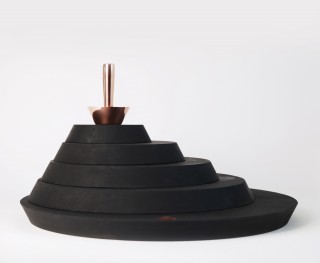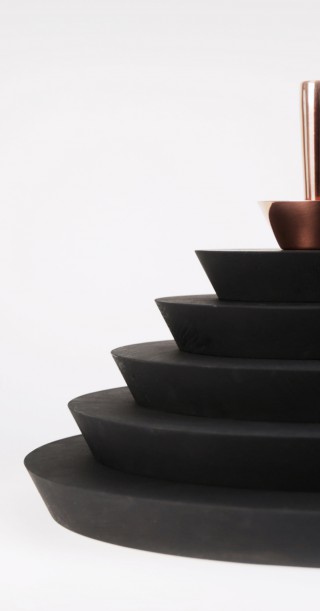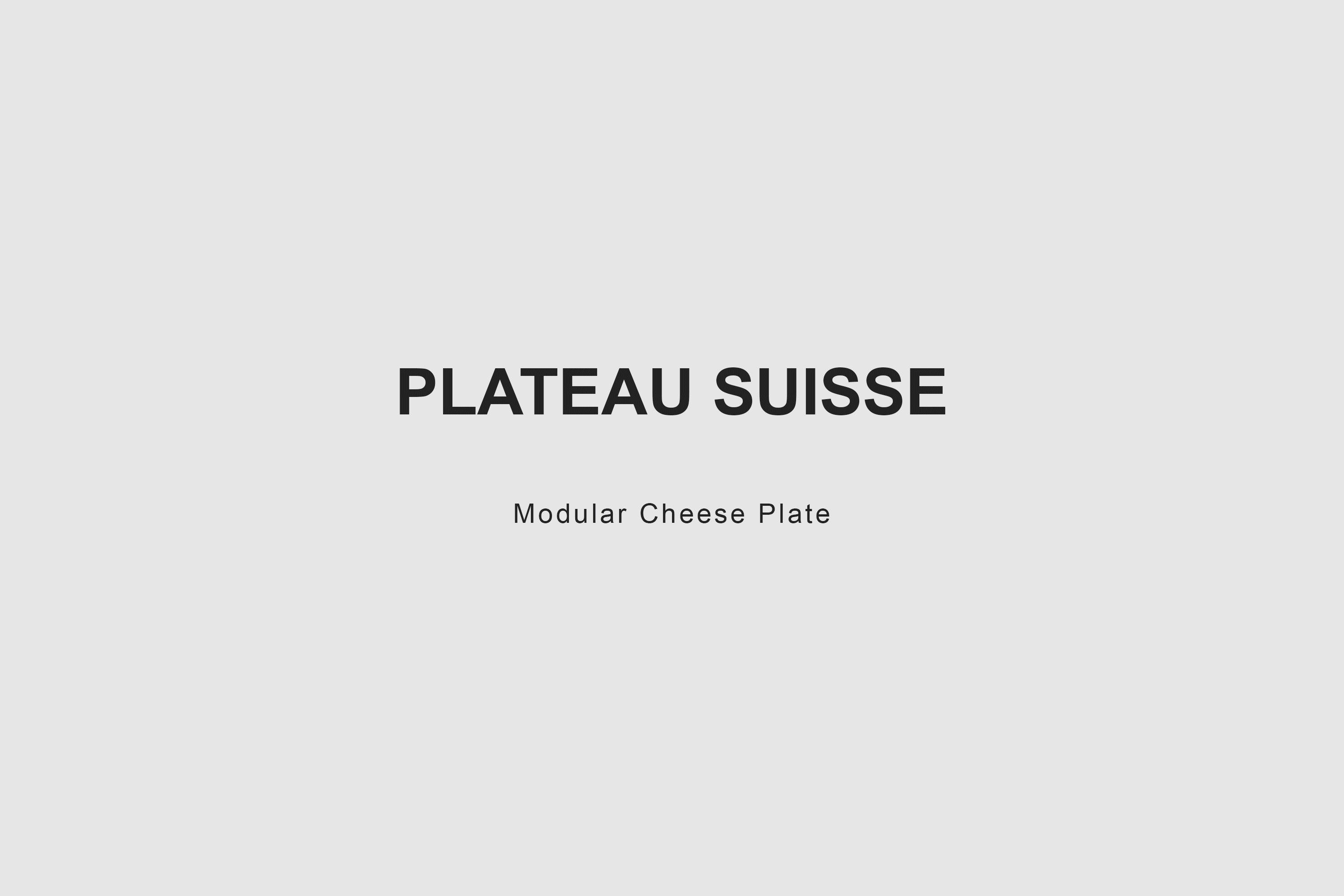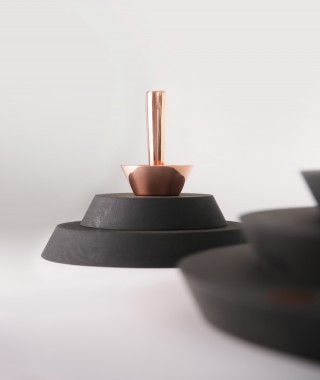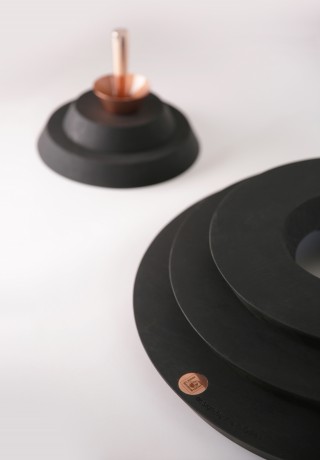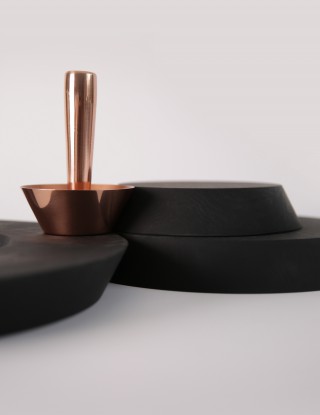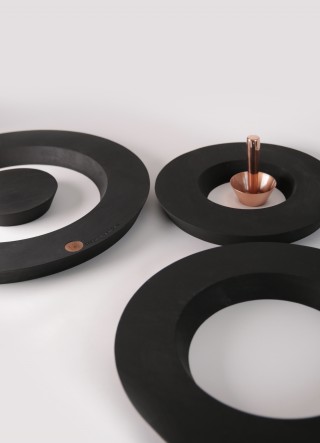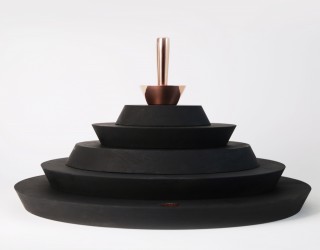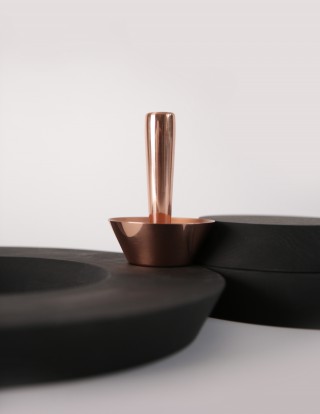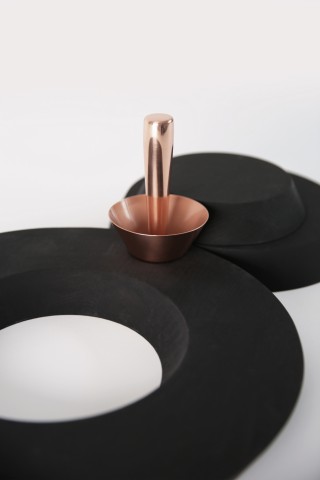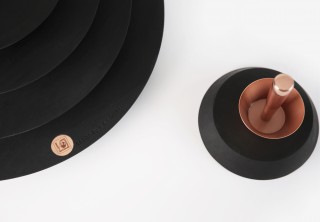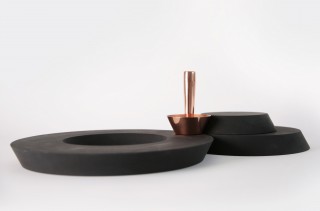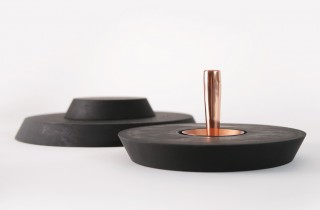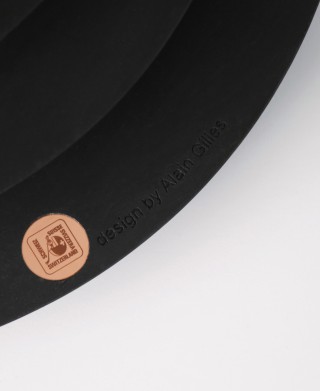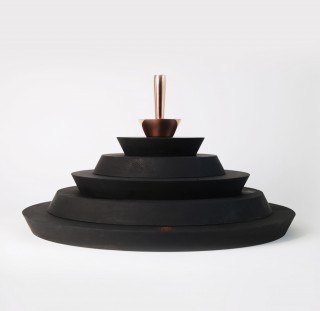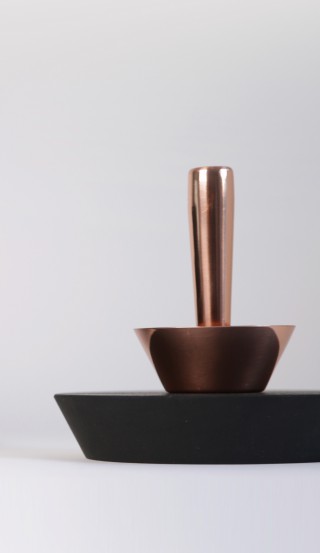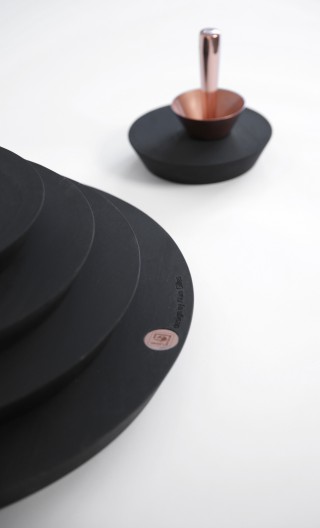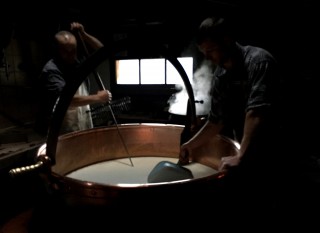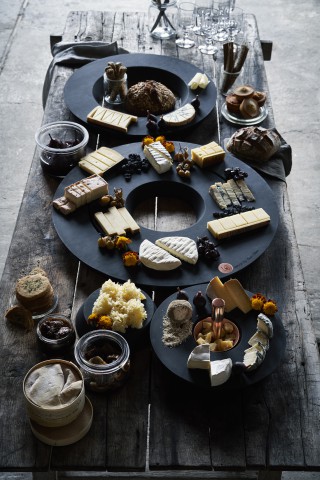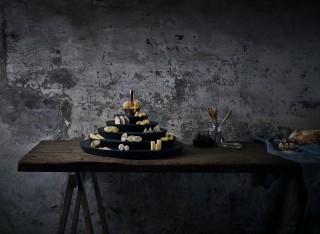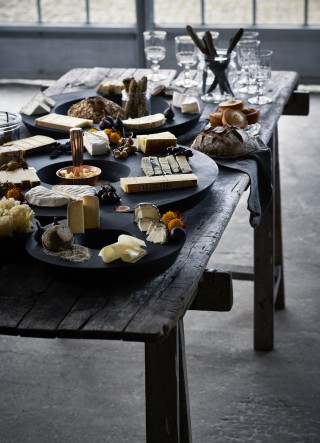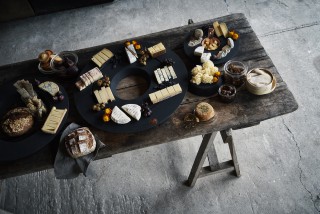PLATEAU SUISSE
ZWITZERLAND CHEESE
The PLATEAU SUISSE project represents a desire to encourage a fresh perspective on Swiss cheeses, the rituals surrounding how we eat them and how they are presented while representing and displaying some Swiss character.
SWITZERLAND CHEESE, the ambassador of Swiss cheeses, has given us carte blanche to showcase the cheeses in another light.
This cheese plate represents both the character and values of a country, a terroir, but also its expertise: particularly its cheesemaking expertise. Through the project’s rather a brutalist structure, we have attempted to convey the raw, pure aspect of the country’s landscapes and architecture. The symbolic strength of rock. With values like purity, authenticity, the importance of naturalness and sustainability. On the other hand, we are also striving to demonstrate Switzerland’s great expertise, its refinement and command of technology that is evident in its artisanal clockmaking, for example.
We are trying to integrate a rawer aspect into the piece, with the plats made of black wood, and a subtler and more refined aspect of a little copper holder that tops the ensemble. Once stacked together, the different parts of the plate evoke a mountain that has been scaled and conquered, the copper topper like a flag planted triumphantly at the summit.
The aim is to create the unexpected, to go beyond the initial request for a cheese plate by offering an object with a real three-dimensional presence. To create a sort of stage so that presenting cheese, at a gathering, for example, can offer a totally new experience; new and fresh displays.
It is important to note that these days cheese is being presented pre-cut increasingly frequently. Whole cheese is being included less and less on cheese boards. This makes the cheese appear more modern, lighter and means it stays better presented throughout the evening. Incidentally, there have been cheese presentation competitions for cheesemakers recently.
The choice of black wood for the plate is not inconsequential. The colour black recalls rock, and it is also a colour that goes very well visually with Swiss cheeses, which tend to be pale.
Our “Plateau Suisse” is modular in structure, which therefore allows the different wooden parts to fit into each other, and means it has less packaging and needs less wood to be produced.
This modular aspect also allows the plate’s user to play with the different parts, a little like playing with children’s wooden toys, and allows many different structures and presentations to be created. The user becomes a sort of co-designer this way. When entertaining fewer people, you can decide to use fewer parts to create a more compact plate. Being able to move the different levels means being able to slide them backwards over each other to create the kinds of plateaus one sees in the Alps.
As for the little copper holder, which resembles a little tool, it can be a space for chutneys and jams that are sometimes paired with cheeses during a tasting, or simply to hold rinds or cheeses that are eaten in slivers, like “Tête de Moine” cheese, for instance.
Using wood and copper as the primary materials is a crucial choice because they are also an inherent part of the Swiss cheese-making process: they are what people picture when they imagine that process. A copper cauldron over a fire of blackened wood is an ancestral image, and still present today in the production of artisanal Swiss cheeses.
The repetition of the wooden plates in a pyramid shape is also a way to take people out of their day-to-day lives, to take them ‘elsewhere’, to create magic with basic shapes. It has the same logic as the champagne glass pyramid that represents a unique moment but also becomes a real event, a performance when the champagne is poured in a waterfall-effect. The cheese plate, therefore, becomes a talking point at a social gathering.
To make the pieces, we work with two artisanal companies renowned for their skills. Firstly the Belgian company Mathy by Bols that sells high-end children’s furniture around the globe, who we have worked with before as a designer since we have a little wooden desk in their collection. The little copper holder is produced by the French company Mauviel 1830, a historic company that makes copper pans used by the majority of big ‘star’ chefs, and who was also involved in the kitchen utensil project that we created for Evolution.
It’s important to know that the name chosen for the Plateau Suisse project is a nod to the fact that the plate is no longer ‘flat’ like the average plate, but it is also a reference to the plateaus found in the alps where cows graze, whose milk is used to make the cheeses, which generally have ‘protected’ AOP status (AOP – appellation d’origine protégée). After all, Switzerland is the country of mountain cheese.
